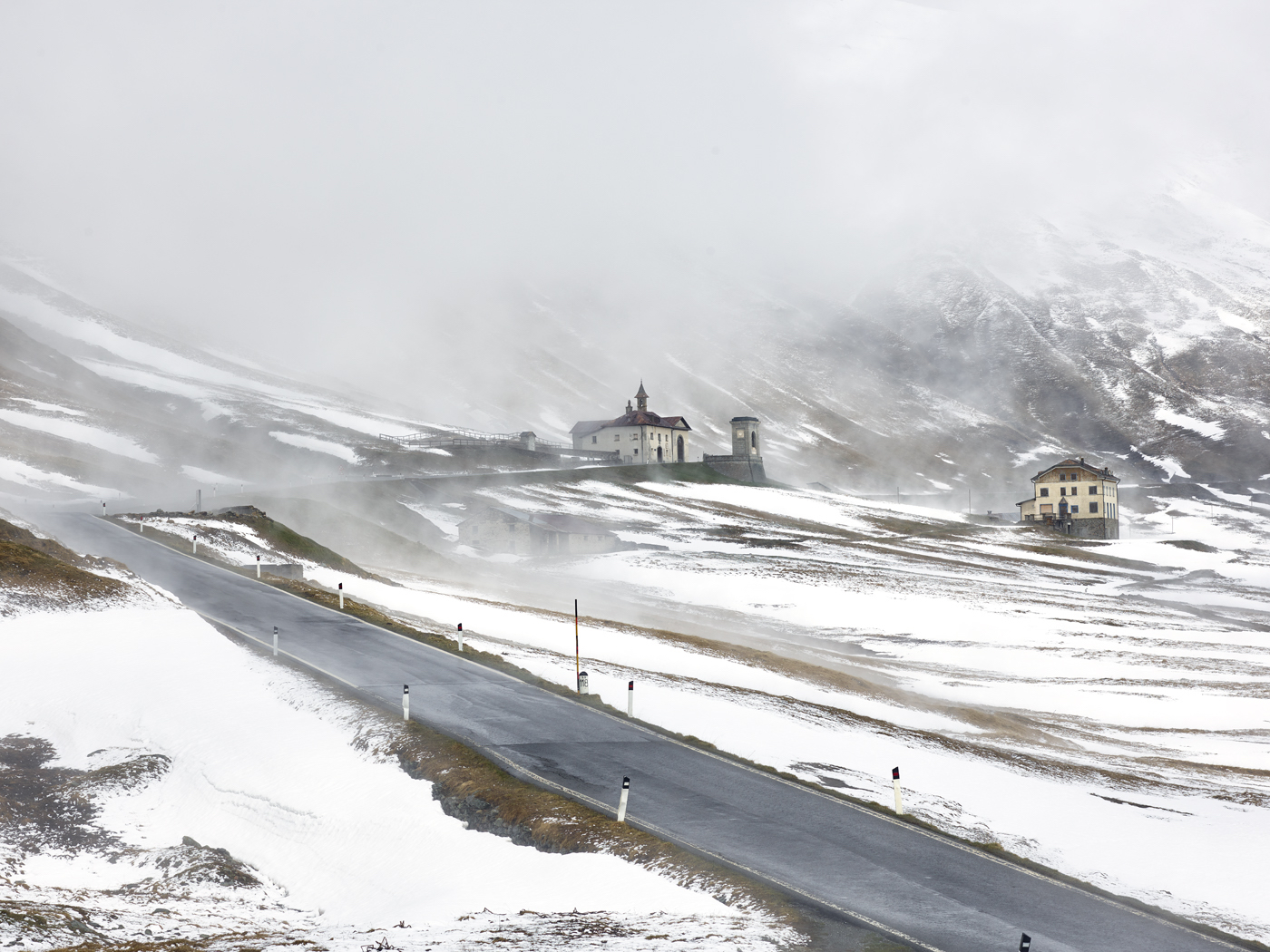One of the earliest memories I have of riding a bike is climbing the Stelvio with my Dad at the age of eight. There’s a great picture of me on the climb – it was a bright summer day, warm enough for a short-sleeved jersey, and I was riding my blue and silver Francesco Moser bike. The Stelvio is tough for any cyclist but for a child it’s a pretty special achievement; it felt like I was climbing the highest mountain in the world.
The Stelvio is a symbol of the Italian Alps and has a magical appeal to cyclists. It’s one of those bucket-list climbs that has to be done and experienced but it’s brutal – its altitude, its length and its gradient make it one of the hardest climbs there is. The road was built by an architect called Carlo Donegani, who people joked was the ‘designer of the impossible’; it took 2500 men five years to build and there are 70 hairpins – it’s visually stunning.
For me, just hearing the name Passo dello Stelvio is enough to induce fear. On a climb as along as this there is only one rule – don’t go into the red (in Italian we call it fuori giri), especially in a race. Push too hard, even if you’re feeling good, and you’ll never make it to the top. In the last 5km you’re riding at over 2000 metres above sea level and there’s so little oxygen that you’re gasping for breath.
It’s rare to see an attack on the Stelvio because it’s so long. When you hit the last few kilometers the gradient is really harsh and you’re riding slow, as low as 8km/h. At this point you’ve already ridden 20km up hill, which takes its toll and so it only takes a slight increase in speed before you see riders exit from the back and get dropped. This is a climb that does the culling itself, there’s no need to attack.
For a cyclist it’s on the climbs where you become one with the bicycle. Climbing can be an intense, emotional, experience but for me, when you’re pushing hard and at your limit it’s the best sensation that you can have on a bike.
I’ve climbed the Stelvio in situations where I was in the running for the GC in the Giro d’Italia, others when winning wasn’t on the cards, so I could relax. The psychological approach to a climb is very different if you’re a race contender than it is when you’re simply getting to the top.
When things aren’t going well this mountain can be really cruel. In 2005 I was second in the overall standings in the Giro and I was aiming for the podium or even a win. I’d had stomach cramps the day before and as I approached the Stelvio the pain got worse and worse. Every pedal stroke against that fierce gradient was torture. I lost 42 minutes and my chances of winning the Giro were wiped out. On that day the Stelvio really did seem like the highest mountain in the world.
—
Read The Climber, by Paul Sherwen – Essay from Mountains: Epic Cycling Climbs
Read My Greatest Day, by Andy Hampsten – Essay from Mountains: Epic Cycling Climbs
Read Day In Yellow, by Sean Kelly from Mountains: Epic Cycling Climbs
Read The Watch, by Tao Geoghegan Hart from Mountains: Epic Cycling Climbs.
Read Just Like Home, by Philippa York from Mountains: Epic Cycling Climbs.
Read High Life, by Greg LeMond from Mountains: Epic Cycling Climbs.

